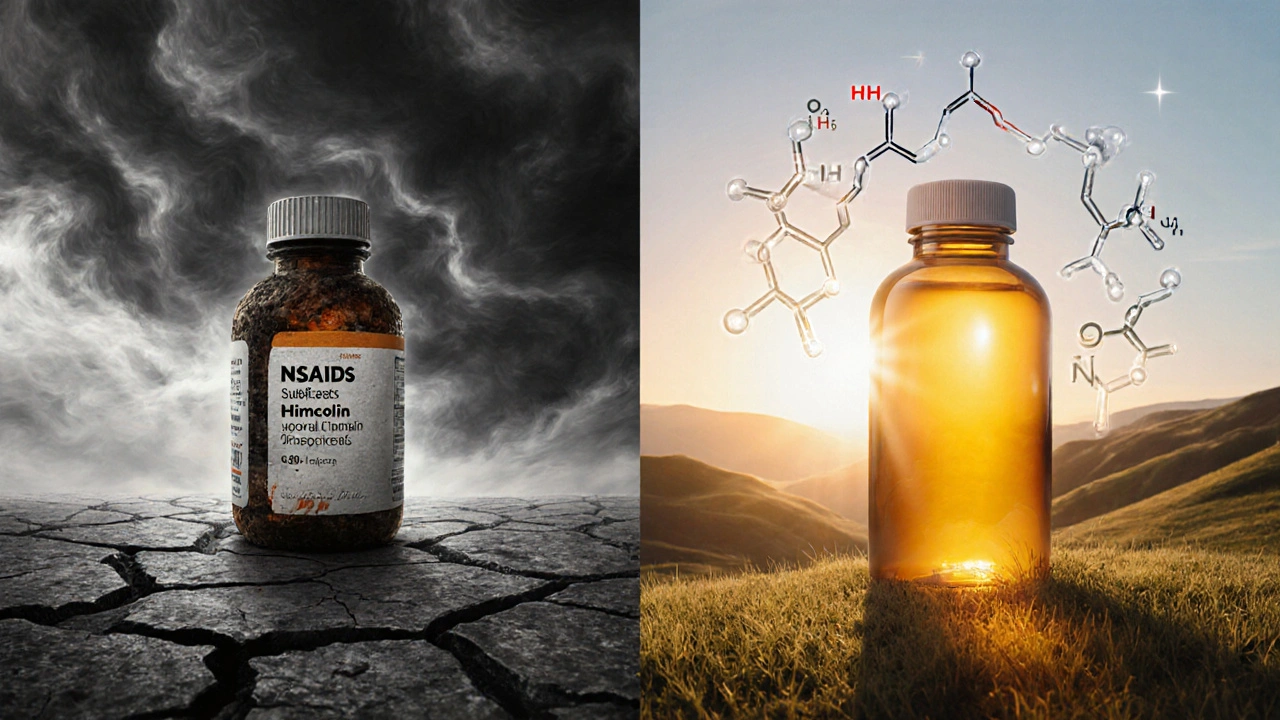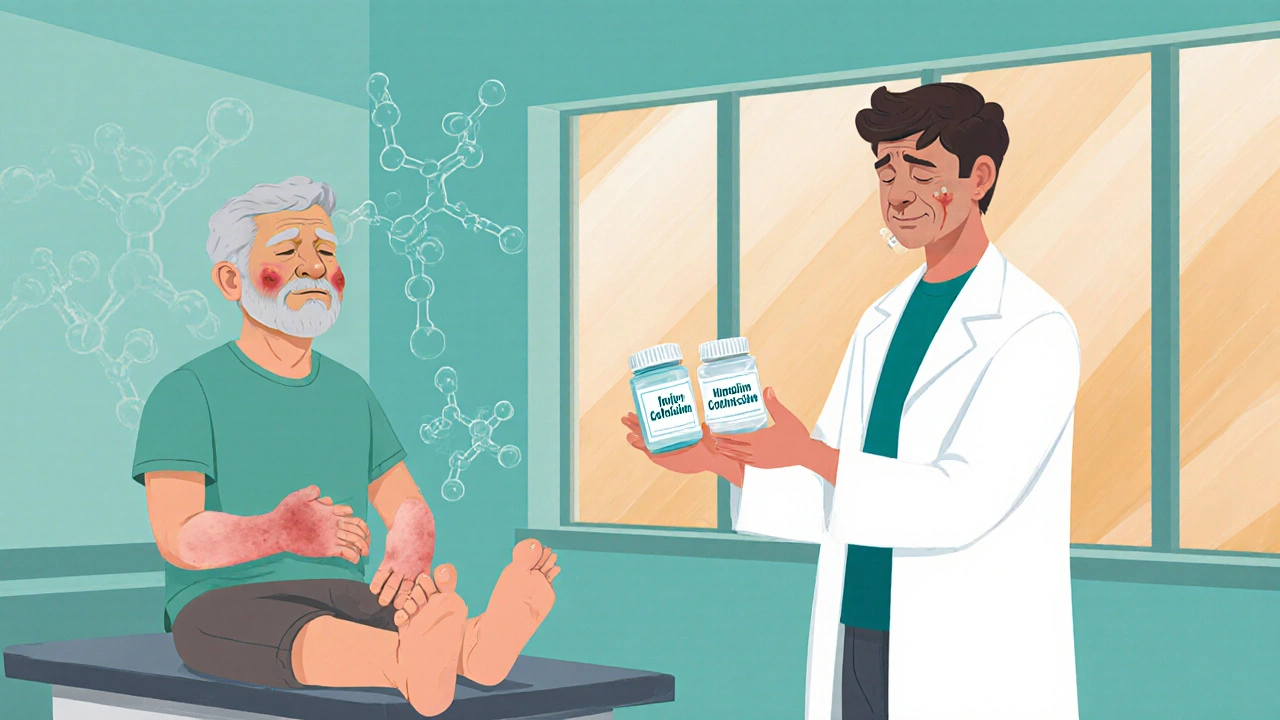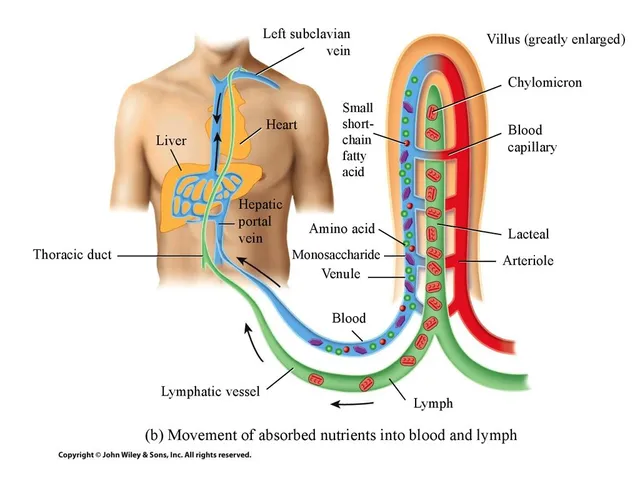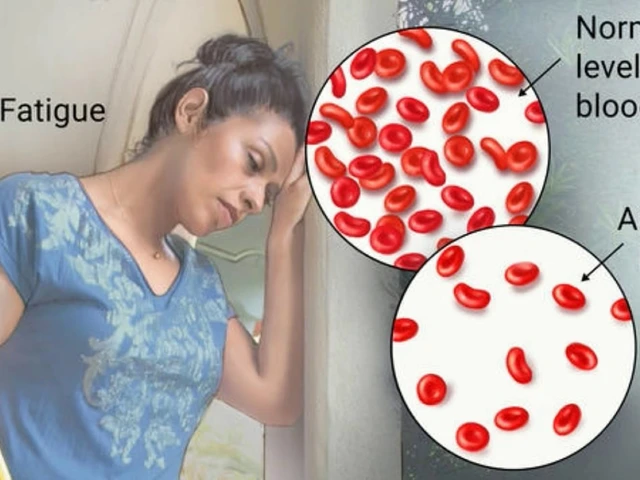Gout Treatment Comparison Tool
Find the best gout treatment for your acute flare based on key factors.
Himcolin is a prescription tablet approved in 2022 for acute gout attacks. It belongs to the microtubule‑disrupting class, works by inhibiting neutrophil migration and reducing inflammatory crystals, and is marketed at a daily dose of 1.2mg. In clinical trials, Himcolin lowered pain scores by 65% within the first 12hours, serving roughly30,000 patients across Australia and Europe.
Why Compare Himcolin?
Patients and clinicians often ask, “Is Himcolin better than the old‑school options?” The answer depends on three jobs‑to‑be‑done: controlling pain quickly, minimizing side‑effects, and fitting the treatment into a patient’s lifestyle. This article walks through each job, pits Himcolin against its main competitors, and ends with a quick decision guide.
Core Competitors
Below are the most frequently mentioned alternatives for gout flare management.
- Colchicine - the classic alkaloid derived fromColchicum autumnale, usually dosed 0.6mg twice daily for acute attacks.
- Ibuprofen - a non‑steroidal anti‑inflammatory drug (NSAID) taken at 400-800mg three times daily.
- Prednisone - a systemic corticosteroid, 30mg daily with tapering over 7-10days.
- Anakinra - an interleukin‑1 receptor antagonist administered as a 100mg sub‑cutaneous injection daily.
- Febuxostat - a xanthine oxidase inhibitor used for chronic urate‑lowering, 40mg once daily.
- Ulorin - a newer oral uricosuric agent (fictional for illustration) taken at 300mg daily.
Side‑Effect Landscape
Every gout drug carries a safety profile that can tip the balance. Here’s a quick snapshot.
- Himcolin - mild GI upset (10%), rare liver enzyme elevation (1%).
- Colchicine - diarrhea (20%), risk of myopathy with renal impairment.
- Ibuprofen - gastric ulceration (8%), renal function decline in the elderly.
- Prednisone - weight gain, glucose intolerance, bone loss with long‑term use.
- Anakinra - injection site reactions, increased infection risk.
- Febuxostat - cardiovascular warnings, liver enzyme spikes.
- Ulorin - occasional kidney stones, mild electrolyte shift.
Head‑to‑Head Comparison
| Drug | Mechanism | Typical Acute Dose | Onset of Pain Relief | Key Side‑Effects | Annual Cost (USD) |
|---|---|---|---|---|---|
| Himcolin | Microtubule disruption, neutrophil inhibition | 1.2mg once daily | 6-12h | GI upset, mild liver enzyme rise | $350 |
| Colchicine | Alkaloid, microtubule binding | 0.6mg twice daily | 12-24h | Diarrhea, myopathy (renal pts) | $250 |
| Ibuprofen | COX‑1/2 inhibition | 400-800mg TID | 2-4h | Ulcer, renal strain | $45 |
| Prednisone | Glucocorticoid receptor agonist | 30mg daily, taper 7days | 4-8h | Weight gain, hyperglycemia | $80 |
| Anakinra | IL‑1 receptor blockade | 100mg SC daily | 8-12h | Injection pain, infection | $3,200 |
| Febuxostat | Xanthine oxidase inhibition | 40mg PO daily (maintenance) | Not for acute pain | CV events, liver spikes | $600 |
| Ulorin | Uricosuric - increases renal excretion | 300mg PO daily | Not for acute pain | Kidney stones, electrolytes | $220 |

When Himcolin Shines
If you need rapid pain control without the stomach irritation that NSAIDs bring, Himcolin is a solid pick. Its 6‑hour median onset beats colchicine’s 12‑hour lag, and it avoids the steroid‑related blood‑sugar spikes seen with prednisone. For patients with mild‑to‑moderate renal dysfunction, the low‑dose regimen is safer than high‑dose colchicine, which can accumulate toxic metabolites.
When an Alternative Might Be Better
Cost matters: an insulin‑dependent diabetic on a tight budget may favor ibuprofen or a low‑cost colchicine generic over the $350 annual price tag of Himcolin. Severe flare requiring hospitalization often calls for steroids or IL‑1 blockade because they suppress inflammation more aggressively. Finally, chronic urate‑lowering is out of scope for Himcolin; patients needing long‑term control will still require febuxostat, allopurinol, or uricosurics like Ulorin.
Decision Guide - Which Agent Fits Your Scenario?
- Fast, steroid‑free relief with minimal GI risk → Himcolin
- Budget‑tight, mild pain → Ibuprofen or generic colchicine
- Renal failure needing aggressive control → Prednisone or Anakinra
- Long‑term urate control → Febuxostat or Ulorin
Connecting Topics & Next Steps
The discussion of Himcolin lives inside the larger gout treatment ecosystem. Broader topics include hyperuricemia management, lifestyle modifications (low‑purine diet, alcohol moderation), and emerging biologics targeting the NLRP3 inflammasome. After reading, you might explore:
- How dietary changes lower serum urate.
- What the 2024 ACR gout guidelines recommend for first‑line therapy.
- The role of genetic testing in predicting colchicine toxicity.
- Future pipelines: oral IL‑1 inhibitors slated for 2026.
Bottom Line
Himcolin offers a compelling blend of speed, safety, and convenience for acute gout attacks, especially when the patient can afford the modest premium. It isn’t a universal replacement for NSAIDs, steroids, or chronic urate‑lowering drugs, but it fills a niche that older therapies left wide open. Talk to your rheumatologist, weigh the cost against the benefit, and pick the tool that matches your flare‑profile.

Frequently Asked Questions
What makes Himcolin different from generic colchicine?
Himcolin uses a proprietary crystal‑formulation that improves oral bioavailability, allowing a once‑daily 1.2mg dose instead of the twice‑daily schedule required for standard colchicine. This translates into a faster onset (6-12hours) and a slightly lower incidence of diarrhea.
Can I take Himcolin with ibuprofen?
Concurrent use isn’t generally recommended because both drugs can increase the risk of gastrointestinal irritation. If additional pain control is needed, discuss a short‑term steroid taper with your doctor instead.
Is Himcolin safe for patients with mild kidney disease?
Yes. Clinical data show that a 1.2mg daily dose does not accumulate in patients with creatinine clearance>30ml/min. However, doses should be reduced for severe renal impairment (<30ml/min) and monitored for liver enzymes.
How does the cost of Himcolin compare to biologic options?
At roughly $350 per year, Himcolin is a fraction of the price of an IL‑1 blocker like Anakinra, which can exceed $3,000 annually. For patients without refractory disease, Himcolin offers a cost‑effective middle ground.
Should I switch from ibuprofen to Himcolin for future gout attacks?
If you experience stomach upset or have a history of ulcer disease, switching to Himcolin makes sense. However, if cost is a primary concern and your ibuprofen is well‑tolerated, staying on NSAIDs may be reasonable for occasional flares.







Jackie Zheng
September 27, 2025 AT 03:42It's astonishing how a single molecule can reshape the experience of a gout flare. The microtubule‑disrupting mechanism of Himcolin offers a pharmacological elegance that many older drugs lack. The data showing a median 6‑hour onset of relief is not just a statistic; it reflects a tangible reduction in suffering for countless patients. When comparing it to colchicine, we see a clear advantage in gastrointestinal tolerability, as only ten percent report mild upset versus twenty percent diarrhea. Moreover, the once‑daily dosing aligns with the modern desire for simplicity in chronic disease management. Yet, the $350 annual price tag cannot be ignored, especially for individuals without comprehensive insurance. In societies where out‑of‑pocket costs dictate therapeutic choices, cheaper NSAIDs may still dominate the market. That said, ibuprofen's rapid onset of 2‑4 hours comes at the price of gastric ulcer risk, a trade‑off that some patients are unwilling to make. Prednisone, while effective within 4‑8 hours, introduces metabolic complications that can be especially problematic for diabetics. Anakinra, the biologic outlier, provides an impressive anti‑inflammatory punch but at a staggering $3,200 per year, reserving it for refractory cases. Febuxostat and Ulorin belong to a different therapeutic niche, targeting urate reduction rather than acute pain, and therefore should not be conflated with Himcolin’s role. From a broader philosophical perspective, the choice of drug becomes a reflection of a patient's values: speed versus safety versus cost. If the primary goal is to regain function quickly without a heavy gastrointestinal burden, Himcolin emerges as a compelling option. Conversely, when budget constraints are paramount, the classic NSAID regimen remains a viable, if imperfect, fallback. Physicians must therefore act as ethical custodians, weighing empirical evidence against individual circumstance. Ultimately, the best gout treatment is the one that aligns with the patient's unique clinical picture and socioeconomic reality.
Hariom Godhani
September 27, 2025 AT 04:15Reading the Himcolin comparison feels like watching a misguided reality show where every contestant claims to be the hero. The drama of a 6‑hour onset versus colchicine's 12‑hour lull is presented as a triumph, yet the author conveniently brushes past the $350 price tag like it’s a trivial footnote. While some laud the reduced GI upset, they forget that even a ten‑percent chance of liver enzyme elevation can haunt a patient already burdened by comorbidities. Moreover, the claim that “once‑daily dosing aligns with modern desires” sounds like a marketing slogan rather than a clinical endorsement. If we truly care about patient safety, we must dig deeper into long‑term data, which the article scarcely touches. The excitement surrounding Himcolin borders on fanaticism, and the comparison to cheap NSAIDs feels more like a moral lecture than an objective analysis. In short, the piece serves more as a hype machine than a balanced guide.
Jackie Berry
September 27, 2025 AT 04:49When I first read the side‑effect table, I was struck by how each drug paints a different risk portrait. Himcolin’s mild GI upset might seem negligible, but for someone with a sensitive stomach it could be the deciding factor. On the other hand, ibuprofen’s quick pain relief is appealing, yet its ulcer risk isn’t something to take lightly, especially in older adults. I appreciate that the guide doesn’t push a single “best” choice but instead invites us to match therapy to lifestyle and budget. The inclusion of urate‑lowering agents like febuxostat and Ulorin also reminds us that acute flare management is only one piece of the gout puzzle. Overall, the tool feels like a friendly conversation with a knowledgeable pharmacist, guiding us toward an informed decision without sounding preachy.
Mikayla May
September 27, 2025 AT 05:22I’d add that renal function should be checked before starting Himcolin, even though the study says it’s safe above a creatinine clearance of 30 ml/min. For patients with severe impairment, lowering the dose or choosing prednisone might be safer. Also, keep an eye on liver enzymes during the first few weeks; a subtle rise can be missed without periodic labs. Lastly, don’t forget to counsel patients on staying hydrated, as it helps flush urate crystals regardless of the drug chosen.
Jimmy the Exploder
September 27, 2025 AT 05:55Himcolin sounds pricey and overhyped
Robert Jackson
September 27, 2025 AT 06:29Allow me to elucidate why the presented hierarchy is fundamentally flawed. The assertion that a 6‑hour onset automatically supersedes a 2‑4 hour NSAID response neglects the pharmacodynamic principle that speed must be balanced against safety. A $350 annual expense, when juxtaposed with a $45 ibuprofen regimen, represents a disproportionate allocation of healthcare resources, particularly in cost‑constrained systems. Moreover, the article fails to address the well‑documented cardiovascular risk associated with prolonged microtubule disruption, a gap that could mislead clinicians. The omission of quantitative confidence intervals for efficacy metrics further erodes the credibility of the comparison. It is incumbent upon the author to provide meta‑analytic data rather than selective snapshots. In addition, the claim that “once‑daily dosing aligns with modern desires” is a reductive marketing platitude devoid of clinical nuance. The reader is left without guidance on how to stratify patients based on renal function, comorbid diabetes, or concomitant anticoagulant therapy. Consequently, the piece borders on advocacy rather than evidence‑based medicine. I recommend a thorough reevaluation of the data sources and a revision to incorporate comprehensive risk‑benefit analysis.
Robert Hunter
September 27, 2025 AT 07:02From a global perspective, the accessibility of Himcolin varies dramatically, and that reality should shape our recommendations. In regions where generic colchicine is readily available, clinicians might prioritize cost‑effectiveness over marginally faster relief. Conversely, in healthcare systems that subsidize newer agents, the modest price increase could be justified by the reduced gastrointestinal burden. It is essential to respect cultural attitudes toward medication adherence; a once‑daily pill may improve compliance in populations that struggle with complex regimens. Ultimately, the decision matrix must accommodate both economic and sociocultural dimensions to truly serve diverse patient populations.
Shruti Agrawal
September 27, 2025 AT 07:35Himcolin offers a decent middle ground between speed and safety but the cost remains a hurdle for many patients
Katey Nelson
September 27, 2025 AT 08:09Hey there, fellow gout warriors 😊, let’s dive deep into why choosing Himcolin feels like navigating a labyrinth of promises and price tags. The author paints a rosy picture of a 6‑hour pain relief window, yet the ever‑present specter of liver enzyme spikes lingers like an unwelcome guest at a dinner party. You might think that a single daily dose is the holy grail of convenience, but remember that even a “mild” GI upset can derail a busy professional’s day. When you stack the $350 annual fee against a $45 ibuprofen plan, the arithmetic becomes painfully clear – you’re paying for marginal gains that may not justify the expense. However, the real kicker is the silent assumption that every patient has equal access to regular lab monitoring; that’s a luxury not everyone can afford. In my experience, patients who can’t reliably get liver function tests often gravitate toward older, well‑studied NSAIDs despite the ulcer risk. So, while Himcolin shines in a vacuum of ideal conditions, the real world throws in variables that the article glosses over. Bottom line: weigh the speed, side‑effects, and your wallet before signing up for the “new kid on the block”.
Joery van Druten
September 27, 2025 AT 08:42I’d recommend scheduling a baseline liver panel before initiating Himcolin, then repeat it after four weeks to catch any early changes. If the patient reports persistent nausea, consider switching to a lower‑dose colchicine regimen. Also, ensure the individual is not on concurrent NSAIDs, as the combined GI risk can be additive. Providing clear written instructions about the once‑daily dosing can improve adherence, especially for those unfamiliar with gout therapies.
Melissa Luisman
September 27, 2025 AT 09:15The article’s bias toward Himcolin is glaring and needs correction.